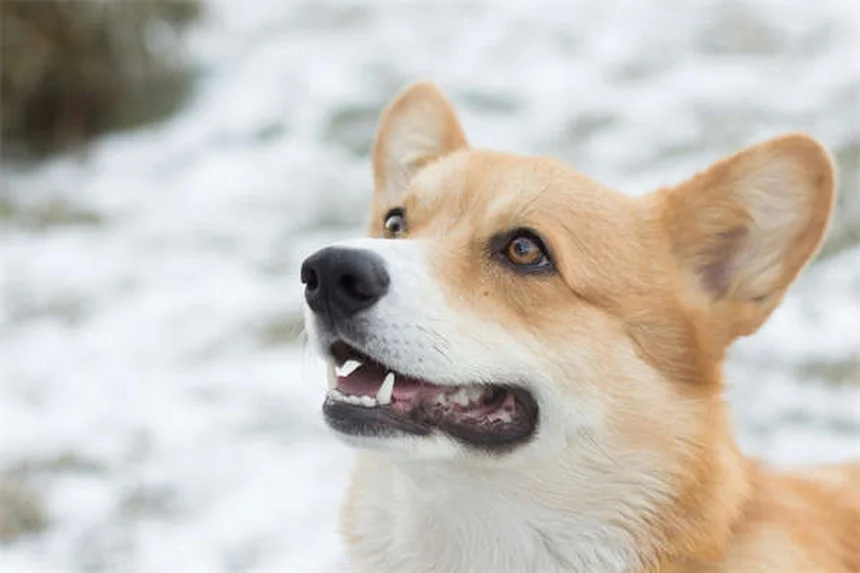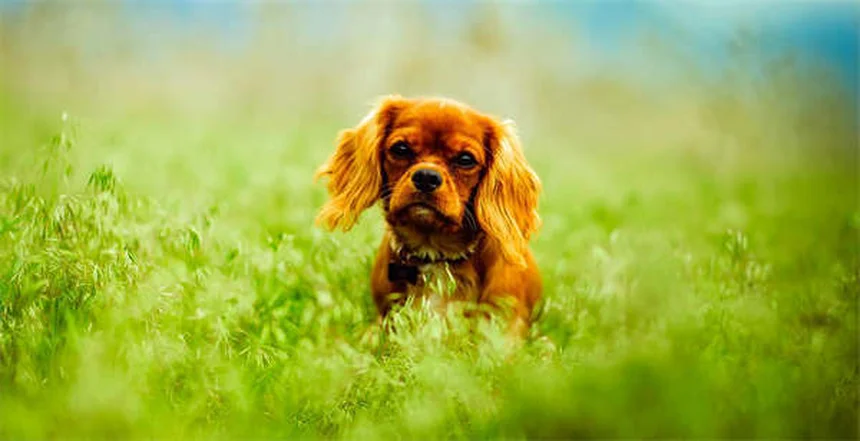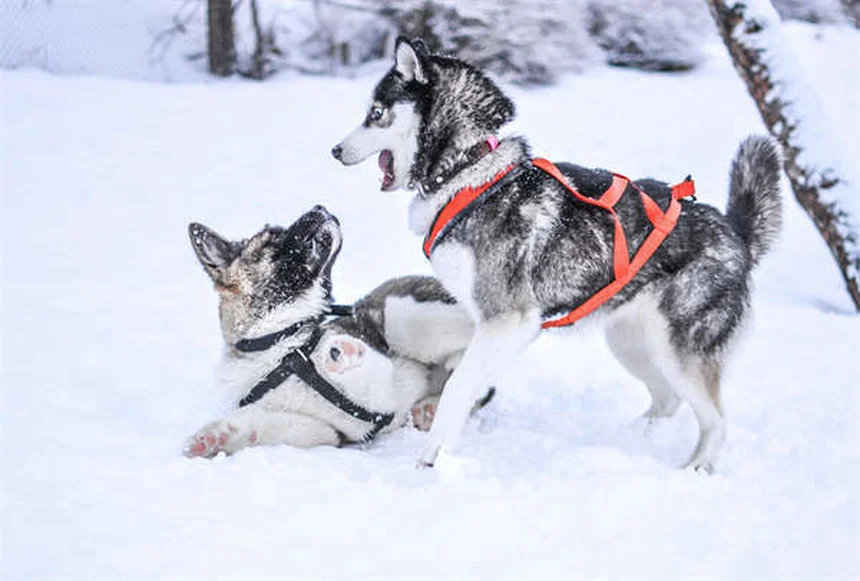What are the best puppy teething toys? The answer is: it depends on your puppy's age, size, and chewing style! From my 10 years of experience with puppies, I can tell you that not all chew toys are created equal. The right toy can soothe sore gums and save your furniture, while the wrong one could damage teeth or become a choking hazard. Here's the deal - between 12-24 weeks, your fur baby is going through the toughest teething phase. Those little needle teeth are making way for adult chompers, and trust me, they'll chew anything they can get their paws on! That's why we need to choose wisely - with options like Nylabone teething rings for gum massage or frozen KONG toys for pain relief. Let me walk you through the safest, most effective choices for your chewing machine!
E.g. :Year-Round Flea Protection: Why Winter Flea Prevention Matters
- 1、Understanding Your Puppy's Chewing Needs
- 2、Choosing Age-Appropriate Chew Toys
- 3、Matching Toys to Your Puppy's Personality
- 4、Common Chew Toy Mistakes to Avoid
- 5、Interactive Play vs. Solo Chewing
- 6、Maintaining Chew Toy Safety
- 7、Final Thoughts on Puppy Chew Toys
- 8、Beyond Basic Chewing - Additional Puppy Needs
- 9、Understanding Breed-Specific Chewing Traits
- 10、Chewing as Training Opportunity
- 11、When Chewing Becomes Excessive
- 12、Chew Toy Safety Through the Years
- 13、FAQs
Understanding Your Puppy's Chewing Needs
Why Do Puppies Chew So Much?
Let's be honest - puppy teeth are like tiny needles! Between 12-24 weeks, your furry friend is going through what we call "peak teething time." Imagine having 28 sharp little teeth pushing through your gums - no wonder they want to chew everything in sight!
Here's the deal: chewing helps relieve their discomfort while strengthening those jaw muscles. But not all chew toys are created equal. The wrong toy could damage their developing teeth or even become a choking hazard. That's why we need to choose wisely based on their age, size, and chewing style.
The Teething Timeline Explained
Did you know puppies go through two full sets of teeth? Here's a quick comparison:
| Age Range | Teeth Status | Recommended Toys |
|---|---|---|
| 0-12 weeks | Baby teeth coming in | No chew toys needed |
| 12-24 weeks | Losing baby teeth, adult teeth growing | Soft rubber toys, frozen treats |
| 24+ weeks | Adult teeth fully in | Durable chew toys, rope toys |
Choosing Age-Appropriate Chew Toys
 Photos provided by pixabay
Photos provided by pixabay
For Young Puppies (4-12 weeks)
At this stage, your puppy is still learning about the world through their mouth. Those baby teeth are sharp but fragile, so we need to be extra careful. I recommend:
• Soft rubber toys like KONG Puppy products that can be frozen
• Textured chew rings that massage gums
• Avoid anything too hard that could damage developing teeth
Remember when my neighbor's golden retriever puppy chewed through an entire coffee table leg? That's exactly what happens when we don't provide proper chew toys! Puppies will find something to chew - it's our job to make sure it's safe.
For Teething Puppies (12-24 weeks)
This is when things get serious. Your puppy's mouth probably feels like it's on fire as those adult teeth push through. Here's what works best:
• Nylabone teething rings with nubs for gum massage
• Frozen carrots (nature's chew toy!)
• Soft rubber toys that can hold treats
Ever wonder why frozen toys work so well? The cold numbs their sore gums while the chewing action helps loosen baby teeth. It's like giving them a puppy popsicle!
Matching Toys to Your Puppy's Personality
The Energetic Chewer
Some puppies chew like they're training for the Puppy Olympics. For these little athletes, we need durable options:
• KONG Extreme toys for power chewers
• Rope toys for interactive play
• Durable fetch toys like ChuckIt! balls
Just last week, I watched a Labrador puppy destroy a "tough" chew toy in under 10 minutes. That's when we realized he needed the heavy-duty stuff! Always supervise your puppy with new toys to make sure they're handling them safely.
 Photos provided by pixabay
Photos provided by pixabay
For Young Puppies (4-12 weeks)
Some puppies chew when they're nervous or lonely. For these sensitive souls, comfort is key:
• Soft plush toys with no small parts
• Scented toys that remind them of mom
• Puzzle toys to keep their mind occupied
My friend's rescue puppy wouldn't stop chewing his bedding until they got him a snuggle puppy with a heartbeat. Sometimes it's not about the chewing - it's about comfort.
Common Chew Toy Mistakes to Avoid
Dangerous Choices
Not all "natural" chews are safe. Here's what to steer clear of:
• Real bones (can splinter and cause injuries)
• Antlers (too hard for puppy teeth)
• Cheap plastic toys (can break into sharp pieces)
Did you know that vets see more dental injuries from bones than from approved chew toys? It's true! Those natural options might seem appealing, but they can do serious damage.
Sizing Matters
Here's something many new puppy parents overlook - size appropriateness. A toy that's perfect for a Great Dane puppy could be a choking hazard for a Chihuahua puppy.
Always check the packaging for size recommendations. A good rule of thumb? If your puppy can fit the whole toy in their mouth, it's probably too small.
Interactive Play vs. Solo Chewing
 Photos provided by pixabay
Photos provided by pixabay
For Young Puppies (4-12 weeks)
Chew toys aren't just for keeping puppies busy - they're fantastic bonding tools! Try:
• Gentle tug-of-war with rope toys
• Fetch with soft balls
• Hide-and-seek with treat-dispensing toys
Remember when I mentioned that Labrador puppy? His owner started incorporating 15-minute play sessions before leaving for work, and suddenly the destructive chewing stopped. Tired puppies are well-behaved puppies!
Independent Play Options
Of course, we can't play with our puppies 24/7. For those times when you're busy, try:
• Frozen KONGs stuffed with peanut butter
• Puzzle toys that dispense kibble
• Durable chew toys that last
Pro tip: Rotate toys every few days to keep things interesting. That "new toy" excitement will help prevent boredom chewing.
Maintaining Chew Toy Safety
Regular Inspections
Here's something scary - most puppy parents don't check their dog's toys often enough. You should:
• Examine toys daily for damage
• Discard any with broken pieces
• Wash soft toys regularly
I learned this the hard way when my puppy swallowed part of a frayed rope toy. $800 emergency vet visit later, I became religious about toy inspections!
Cleaning Tips
Dirty toys can harbor bacteria. Keep them clean with:
• Hot water and mild soap for rubber toys
• Machine washing for plush toys (check labels)
• Regular disinfecting for shared toys
Think about it - would you want to chew on something covered in yesterday's drool? Neither does your puppy!
Final Thoughts on Puppy Chew Toys
Invest in Quality
Cheap toys might save money now, but vet bills cost more. Quality chew toys from reputable brands like KONG or Nylabone are worth every penny.
Here's a comparison of what you might spend:
| Option | Initial Cost | Potential Vet Costs |
|---|---|---|
| Quality Chew Toy | $15-$30 | $0 (when used properly) |
| Cheap Toy/Bone | $5-$10 | $500+ for dental work or surgery |
Observe Your Puppy
Every puppy is unique. What works for your friend's dog might not work for yours. Pay attention to:
• Which toys they prefer
• How aggressively they chew
• Any signs of discomfort
After all, you know your puppy better than anyone. Trust your instincts - if a toy doesn't seem right, it probably isn't!
Beyond Basic Chewing - Additional Puppy Needs
Mental Stimulation Matters Too
You know what's just as important as physical chewing? Exercising that puppy brain! While chew toys address the physical need to gnaw, we can't forget about mental enrichment.
Puzzle feeders are my absolute favorite solution. These clever devices make your puppy work for their kibble, turning mealtime into brain time. The Nina Ottosson puzzle toys come in different difficulty levels - start with the beginner ones unless you want to watch your pup get frustrated! Nothing's funnier than seeing a puppy tilt their head in confusion at a new puzzle, but trust me, they'll figure it out faster than you'd expect.
The Importance of Rotation
Here's a secret veteran dog trainers know - toy rotation prevents boredom. Just like kids, puppies lose interest in the same old toys day after day.
I recommend having three sets of toys and rotating them weekly. Keep one set out, store the others, and watch how excited your pup gets when "new" toys reappear! This simple trick can save your furniture from becoming an unwilling chew toy. Pro tip: Wash the stored toys before rotating them back in - they'll smell fresh and exciting all over again.
Understanding Breed-Specific Chewing Traits
Retrievers vs. Terriers
Not all puppies chew the same way! Breed plays a huge role in chewing behavior. Let me break it down:
• Retrievers tend to be mouthy - they love carrying things gently in their mouths
• Terriers are more likely to shake and destroy toys aggressively
• Herding breeds often prefer interactive toys they can chase
Ever wonder why your friend's Golden Retriever carries toys around while your Jack Russell tears them apart? Now you know! This knowledge helps us pick the perfect toys for each puppy personality.
Size Considerations
Here's something many new puppy parents overlook - a Great Dane puppy and a Chihuahua puppy have completely different chewing capabilities. The table below shows why size-appropriate toys matter:
| Puppy Size | Chewing Power | Recommended Toy Durability |
|---|---|---|
| Small (under 20 lbs) | Moderate | Medium rubber, plush with reinforced stitching |
| Medium (20-50 lbs) | Strong | Dense rubber, woven rope toys |
| Large (50+ lbs) | Extreme | KONG Extreme, solid rubber toys |
Chewing as Training Opportunity
Redirecting Bad Habits
Chewing isn't just about teething - it's a golden training opportunity! When your puppy goes for your favorite shoes, don't scold them. Instead:
1. Calmly say "Oops!"
2. Offer an approved chew toy instead
3. Praise enthusiastically when they take it
This positive reinforcement teaches them what's okay to chew. Remember, puppies aren't being "bad" when they chew your stuff - they just don't know any better yet!
Building Good Manners
Chew toys can actually help with other training too. For example:
• Use chew time to practice "settle" commands
• Teach "drop it" by trading toys for treats
• Build focus by having them chew near distractions
My neighbor's puppy learned "leave it" faster when we incorporated his favorite chew toy into the training. Food isn't the only reward that works! Sometimes the chance to gnaw on their beloved KONG is motivation enough.
When Chewing Becomes Excessive
Recognizing Problem Behavior
While chewing is normal, there's a line where it becomes concerning. Watch for:
• Chewing that continues past 18 months
• Destruction of household items despite proper toys
• Signs of anxiety accompanying chewing
Did you know that some dogs chew excessively due to separation anxiety? If your pup only destroys things when you're gone, it might not be about teething at all. In these cases, we need to address the root cause, not just the symptoms.
Professional Help Options
When home solutions aren't enough, don't hesitate to seek help:
• Certified dog trainers can assess the behavior
• Veterinary behaviorists address medical causes
• Doggy daycare provides supervised play
I'll never forget the Labrador who chewed through a door - his family thought it was normal puppy behavior until their vet diagnosed anxiety. Sometimes the solution requires professional insight, and that's perfectly okay!
Chew Toy Safety Through the Years
From Puppy to Adult
Your dog's chewing needs will change as they grow. Here's what to expect:
• Puppyhood (2-6 months): Intense chewing, soft toys best
• Adolescence (6-18 months): Powerful jaws, durable toys needed
• Adulthood (18+ months): Chewing decreases but still important
Ever notice how your adult dog still enjoys a good chew session? That's because chewing remains a natural, satisfying behavior throughout their life. We just need to adjust the toy selection as they mature.
Senior Dog Considerations
Even older dogs benefit from chewing! But we need to be mindful of:
• Dental health - softer options for sensitive teeth
• Arthritis - easy-to-hold shapes
• Cognitive changes - familiar, comforting toys
My 12-year-old Golden still loves her puppy KONG - it's like her security blanket! The right chew toy can provide comfort at any age, we just need to choose wisely for their changing needs.
E.g. :Choosing the Right Dog Toys and Teething Toys for Your Puppy
FAQs
Q: What age should I start giving my puppy teething toys?
A: You'll want to start introducing puppy teething toys around 12 weeks old when those baby teeth begin falling out. Before that (4-12 weeks), their teeth are too delicate for serious chewing. I always recommend starting with soft rubber toys like the KONG Puppy that can be frozen - the cold helps numb sore gums while the gentle texture won't damage developing teeth. Remember my neighbor's golden retriever who chewed through a table leg? That's what happens when we don't provide proper outlets!
Q: Are rope toys safe for teething puppies?
A: Here's the scoop on rope toys - they're great for older puppies (24+ weeks) whose adult teeth have come in, but I don't recommend them for young teething pups. Those baby teeth can easily get damaged during tug-of-war, and loose strands can cause intestinal blockages if swallowed. If you do use rope toys, choose durable options like the Frisco rope dog toy with 5 knots and always supervise playtime. After my $800 vet visit from a frayed rope incident, I became super careful about toy safety!
Q: What's better for aggressive chewers - Nylabone or KONG?
A: For power chewers, I swear by the KONG Extreme line - they're virtually indestructible! While Nylabone makes great teething toys for moderate chewers, I've seen determined puppies gnaw through them in minutes. The KONG Extreme's tougher rubber stands up to serious chewing, plus you can stuff them with peanut butter for extra distraction. Just last week, a client's Labrador destroyed a "tough" chew toy in 10 minutes - we upgraded to KONG Extreme and problem solved!
Q: Can I give my puppy ice cubes for teething?
A: While ice might seem like a quick fix, I don't recommend it as a primary teething solution. The extreme cold can actually cause tooth sensitivity or damage enamel. Instead, try freezing a damp washcloth or specially designed puppy teething toys like the Nylabone teething pacifier. These provide the cooling relief puppies crave without the risks. Pro tip: Frozen carrot sticks make great natural chew treats too - just supervise to prevent choking!
Q: How often should I replace my puppy's chew toys?
A: You should inspect toys daily and replace them at the first sign of damage - usually every 2-4 weeks for aggressive chewers. Look for cracks in rubber toys, loose stuffing in plush toys, or fraying in rope toys. I recommend having a rotation of 5-6 different types of toys to keep things interesting and extend their lifespan. Remember, a $20 quality toy that lasts a month is cheaper than a $500 vet bill from swallowing broken pieces!











